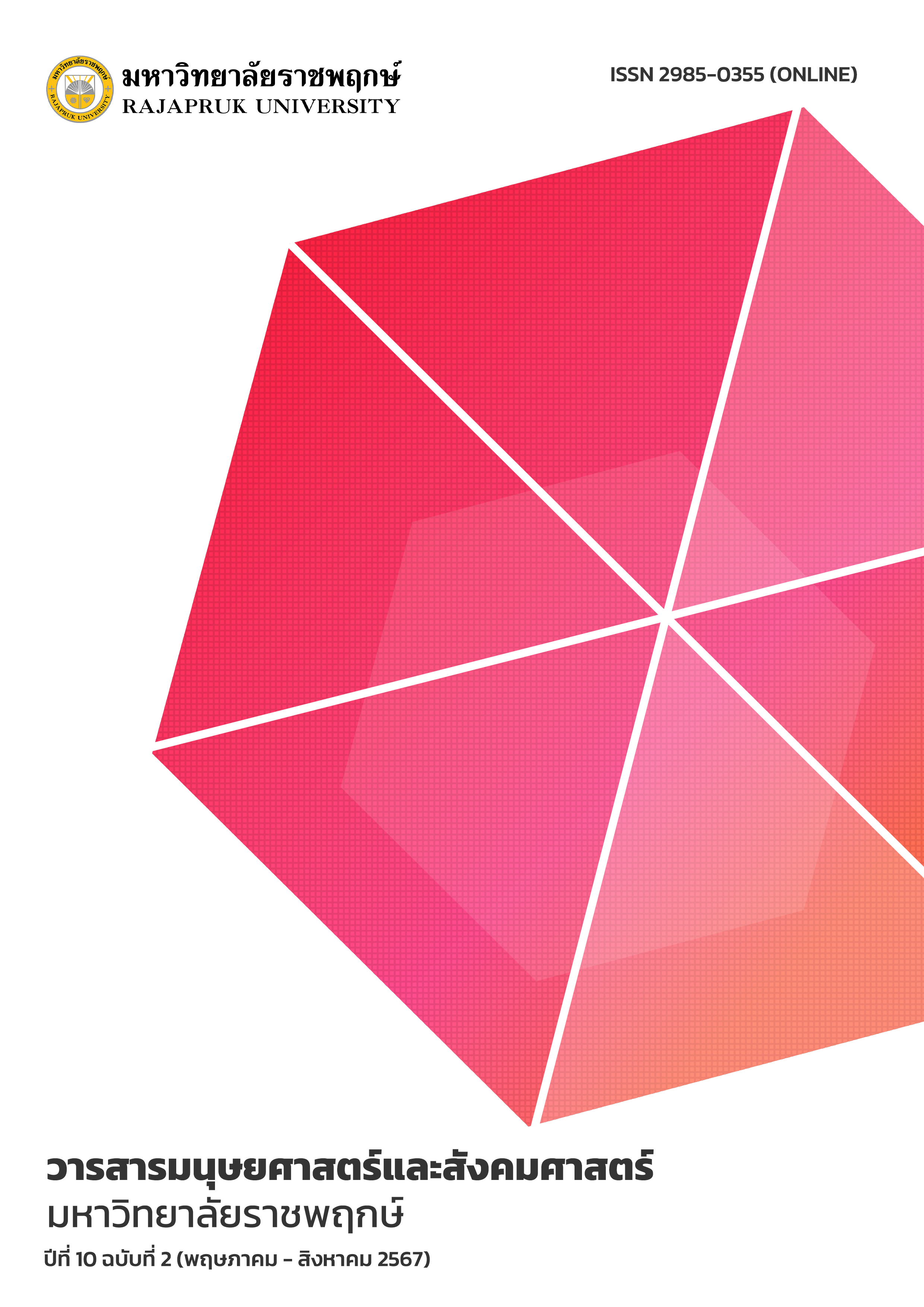Administration of Distance Learning Management via Sattellite (DLTV) in the Digital Age of Schools in Samoeng 2 Educational Quality Development Network Group under Chiang Mai Primary Educational Service Area Office 2
Main Article Content
Abstract
ABSTRACT
The objectives of this research were 1) to study management of distance learning via satellite (DLTV) in the digital age of schools. in the Samoeng Educational Quality Development Network 2 group under the district office Chiang Mai Primary Education Area 2 and 2) proposed a guideline for improving the management efficiency. Organize distance learning via satellite (DLTV) in the digital age of schools in the group of quality development networks. Samoeng 2 Education was under Chiang Mai Primary Educational Service Area Office 2. The population were 92 school administrators, teachers, and school committees. The tools used were questionnaires and structured in- depth interviews. The data were analyzed by arithmetic averages, standard deviations, and content analysis.
The result revealed that all 4 aspects, in overall, were at a high level (µ=4.31, σ=0.16). When considered individually with the average values in descending order, the factors order were as followed; the aspect of learning in the digital age was at a high level (µ=4.42, σ=0.24). The second was the aspect of the teachers in the digital age, at a high level (µ=4.39, σ=0.29). The technology and educational innovation of the educational institutions in the digital age was at a high level (µ=4.14, σ=0.30). The least average aspect was the aspect of the learners in the digital age, at a high level (µ=4.11, σ=0.25), respectively. The guidelines to improve the efficiency were as follows; there should be an atmosphere of participation and interactive dialogue that encourages learners to interact well with instructors and classmates. There should be learning activities that allow learners to present information gained from experiences and learning. There should be an analysis, synthesis, reflection on what they have learned. There should be awareness of the matter of individual differences. Teachers should be encouraged to produce educational materials using new technologies. There should be a supervision, monitoring, evaluation to bring results to develop and improve the learner's achievement in both knowledge and practice. There should be an understanding and awareness of the benefits and penalties including basic knowledge of the law of media and technology that relate to themselves, families, communities, and society.
Article Details
References
กมล โพธิเย็น. (2558). การจัดการเรียนรู้เพื่อนําความสุขสู่ผู้เรียน. วารสารศึกษาศาสตร์
มหาวิทยาลัยศิลปากร, 13(2), 121-131.
กรธรรศ ประศาสน์วนิช. (2564). แนวทางการบริหารจัดการการศึกษาทางไกลผ่านดาวเทียม
สำหรับโรงเรียน ขนาดเล็ก สังกัดสำนักงานเขตพื้นที่การศึกษาประถมศึกษาพิษณุโลก เขต 3. วิทยานิพนธ์ครุศาสตรมหาบัณฑิต. คณะครุศาสตร์ มหาวิทยาลัยราชภัฏอุตรดิตถ์.
ชนินทร์ ศรีส่อง และ ชยากานต์ เรืองสุวรรณ. (2564). แนวทางการพัฒนาสถานศึกษาในยุคดิจิทัล สังกัดสำนักงานเขตพื้นที่การศึกษามัธยมศึกษา เขต 27. วารสารบัณฑิตศึกษา มหาวิทยาลัยราชภัฏมหาสารคาม, 18(80), 55-67.
ประดิภา แก้วบุญมา. (2565). แนวทางการบริหารการจัดการเรียนการสอน ด้วยเทคโนโลยีการศึกษาทางไกลของสถานศึกษาในสังกัดสำนักงานเขตพื้นที่การศึกษาประถมศึกษาอุตรดิตถ์ เขต2. วิทยานิพนธ์ครุศาสตรมหาบัณฑิต คณะครุศาสตร์ มหาวิทยาลัยราชภัฏอุตรดิตถ์.
ภคพร เลิกนอก. (2563). การบริหารสถานศึกษาในยุคดิจิทัล สำหรับผู้บริหารสถานศึกษาสังกัดสำนักงานเขตพื้นที่การศึกประถมศึกษาขอนแก่น เขต 4. วิทยานิพนธ์ศึกษาศาสตรมหาบัณฑิต. มหาวิทยาลัยมหาจุฬาลงกรณราชวิทยาลัย วิทยาเขตขอนแก่น.
มาริษา สุจิตวนิช และ เยาวภา บัวเวช. (2563). การรู้เท่าทันสื่อ ประโยชน์และการนำไปใช้
กรณีศึกษามหาวิทยาลัยราชภัฏนครปฐม. Journal of Management Science Nakhon Pathom Rajabhat University, 7(1), 107-120.
มูลนิธิการศึกษาทางไกลผ่านดาวเทียม ในพระบรมราชูปถัมภ์. (2560). เกี่ยวกับ DLTV. ค้นเมื่อ 21 ส.ค. 2564, จาก https://www.dltv.ac.th/about-us.
ศศิวิมล ม่วงกล่ำ. (2562). การวิเคราะห์องค์ประกอบด้านความสามารถทางดิจิทัลของครูและบุคลากรทางการศึกษา จังหวัดสระบุรี. วิทยานิพนธ์ศึกษาศาสตรมหาบัณฑิต. มหาวิทยาลัยเทคโนโลยีราชมงคลธัญบุรี.
ศิริกานต์ จันทรศิริ. (2559). การศึกษาทางไกลผ่านดาวเทียม (DLTV) ตามแนวคิดวงจร
Deming โรงเรียนขนาด เล็กสังกัดสำนักงานเขตพื้นที่การศึกษาประถมศึกษาฉะเชิงเทรา เขต 1. วิทยานิพนธ์ศึกษาศาสตรมหาบัณฑิต(บริหารการศึกษา). ชลบุรี : คณะศึกษาศาสตร์ มหาวิทยาลัยบูรพา.
สำนักงานคณะกรรมการการศึกษาขั้นพื้นฐาน. (2558). นโยบายสำนักงานคณะกรรมการการศึกษาขั้นพื้นฐาน ปีงบประมาณ พ.ศ.2558. กรุงเทพฯ: สำนักงานคณะกรรมการการศึกษาขั้นพื้นฐาน.
อติพร เกิดเรือง. (2559). การส่งเสริมการเรียนรู้ในศตวรรษที่ 21 เพื่อรองรับสังคมไทยในยุคดิจิทัล. วารสารวิชาการ มหาวิทยาลัยราชภัฏลำปาง, 7(1), 173-184.
อมรรักษ์ สวนชูผล. (2558). แนวคิดการเรียนรู้ด้วยการนำตนเองกับการจัดการศึกษา.
วารสารบัณฑิตศึกษา มหาวิทยาลัยราชภัฏวไลยอลงกรณ์ ในพระบรมราชูปถัมภ์, 9(1),
-221
อวัฒฆ์ชฎา ศรีจันทร์ และ วีรพันธุ์ ศิริฤทธิ์. (2558). การบริหารวิชาการที่จัดการเรียนการสอนทางไกลผ่านดาวเทียมของโรงเรียนในสำนักงานเขตพื้นที่การศึกษาประถมศึกษาเชียงราย เขต 2. วิทยานิพนธ์การศึกษามหาบัณฑิต. วิทยาลัยเชียงราย.


